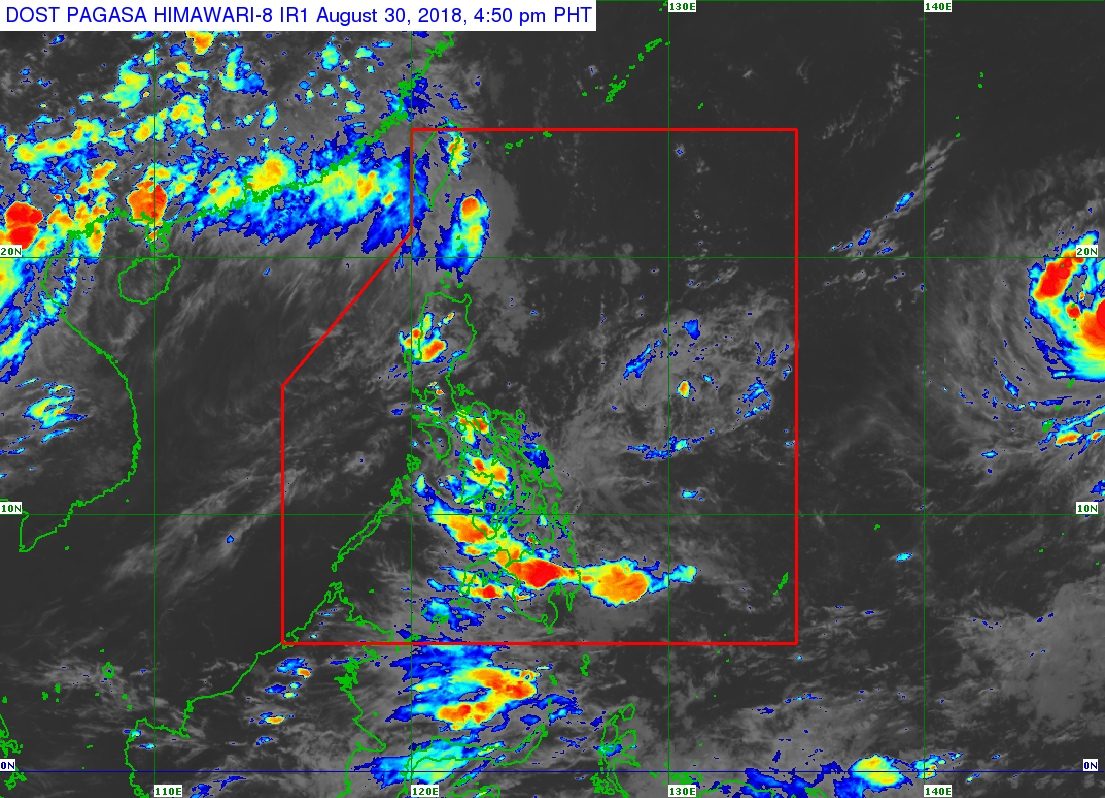SUMMARY
This is AI generated summarization, which may have errors. For context, always refer to the full article.

What’s the weather like in your area? Report the situation through Rappler’s Agos or tweet us at @rapplerdotcom.
MANILA, Philippines – A low pressure area (LPA) and the southwest monsoon or hanging habagat will bring rain to a few parts of the country, while a typhoon outside the Philippine Area of Responsibility (PAR) is being monitored.
In a bulletin issued 4 pm on Thursday, August 30, the Philippine Atmospheric, Geophysical, and Astronomical Services Administration (PAGASA) said the LPA is located 630 kilometers east of Guiuan, Eastern Samar.
The trough or extension of the LPA will bring scattered rainshowers and thunderstorms to Eastern Visayas. PAGASA warned that flash floods and landslides are possible.
The LPA only has a slim chance of developing into a tropical depression within the next 24 to 48 hours.
The southwest monsoon, meanwhile, continues to affect extreme Northern Luzon. Batanes and the Babuyan Group of Islands will also have scattered rainshowers and thunderstorms, which could trigger flash floods and landslides. (READ: FAST FACTS: Tropical cyclones, rainfall advisories)
The rest of the country, not affected by either the trough of the LPA or the southwest monsoon, will only have localized thunderstorms.
There’s also Typhoon Jebi outside PAR, located 2,775 kilometers east of Northern Luzon and moving west at 20 kilometers per hour (km/h). It has maximum winds of 160 km/h and gustiness of up to 195 km/h.
PAGASA said Jebi could enter PAR, but it will likely just stay near the boundary and not approach land. This means it probably won’t have any direct effect on the Philippines.
So far, the Philippines has had 12 tropical cyclones for 2018. The country usually gets an average of 20 tropical cyclones per year. (READ: LIST: PAGASA’s names for tropical cyclones in 2018)
PAGASA declared the start of the rainy season last June 8. – Rappler.com
Add a comment
How does this make you feel?
There are no comments yet. Add your comment to start the conversation.